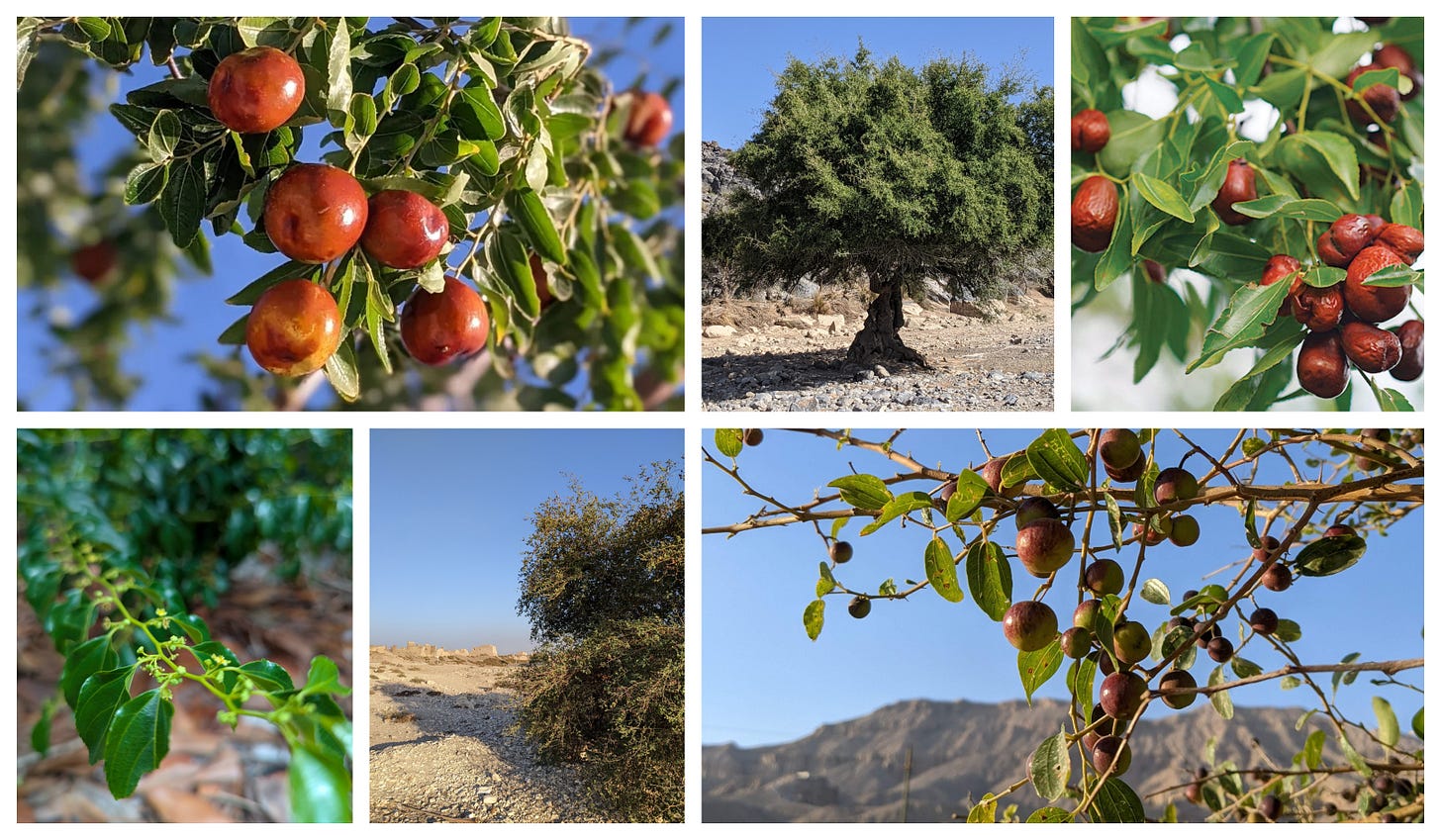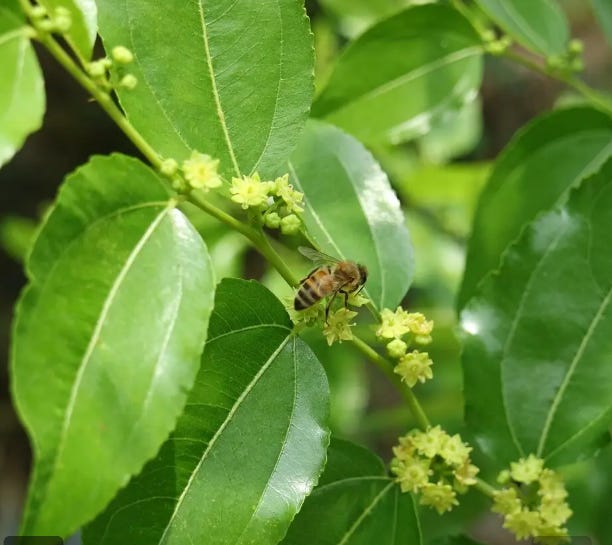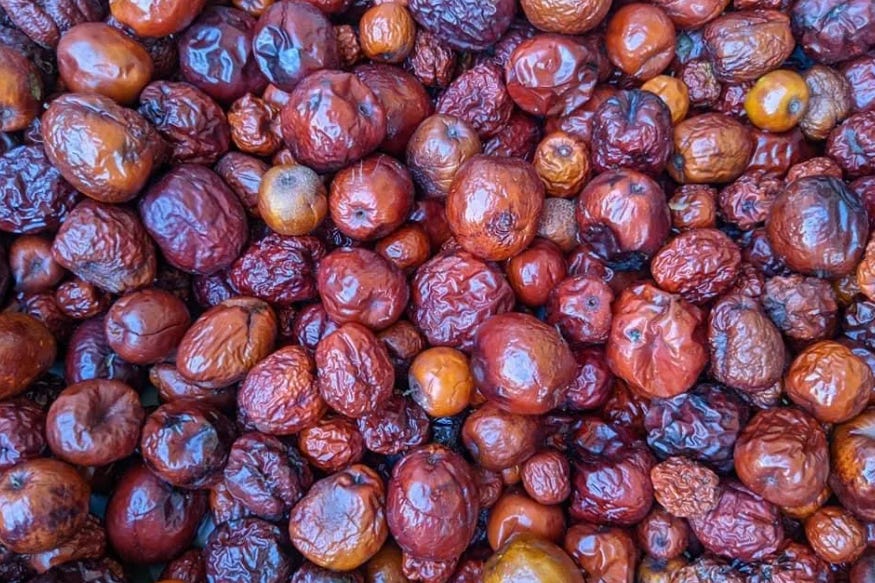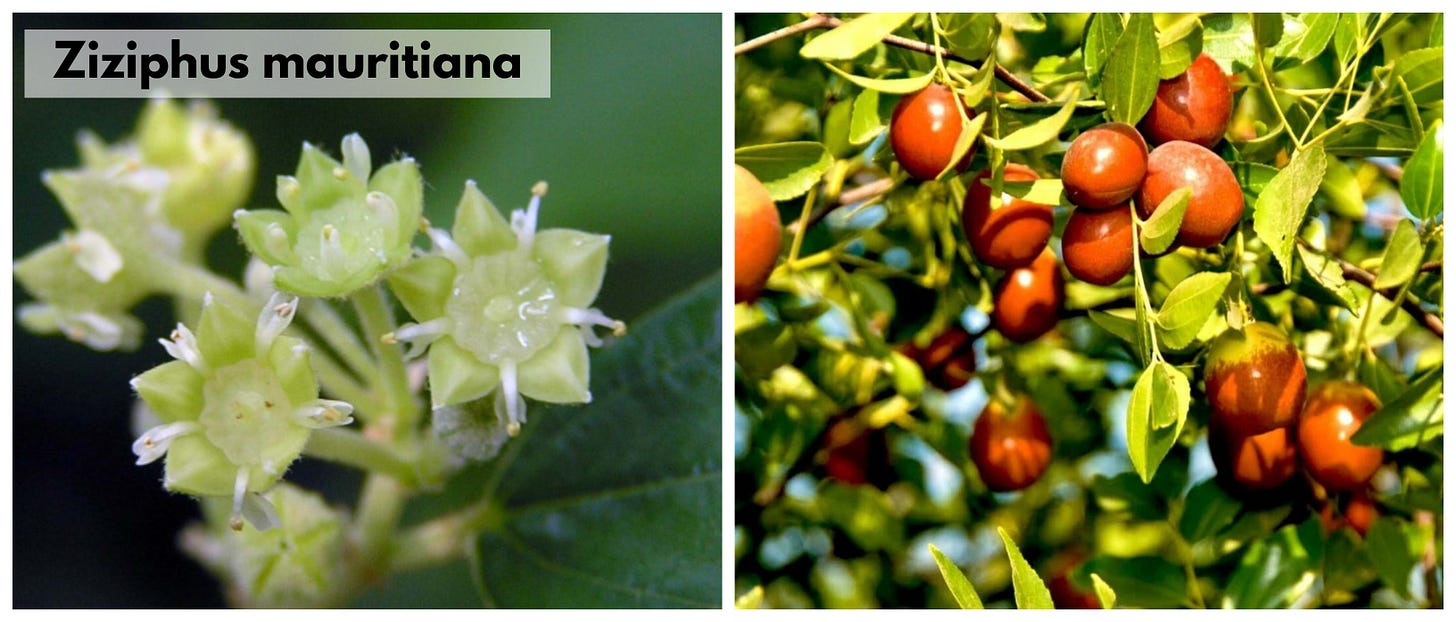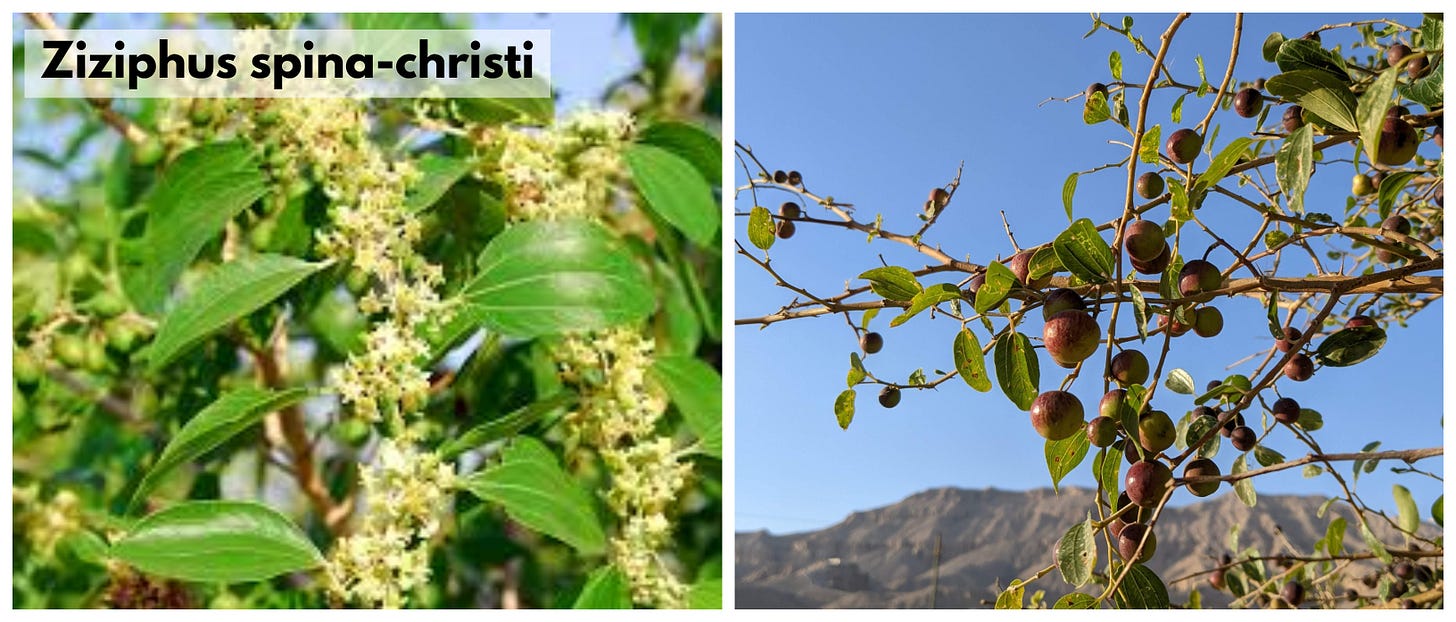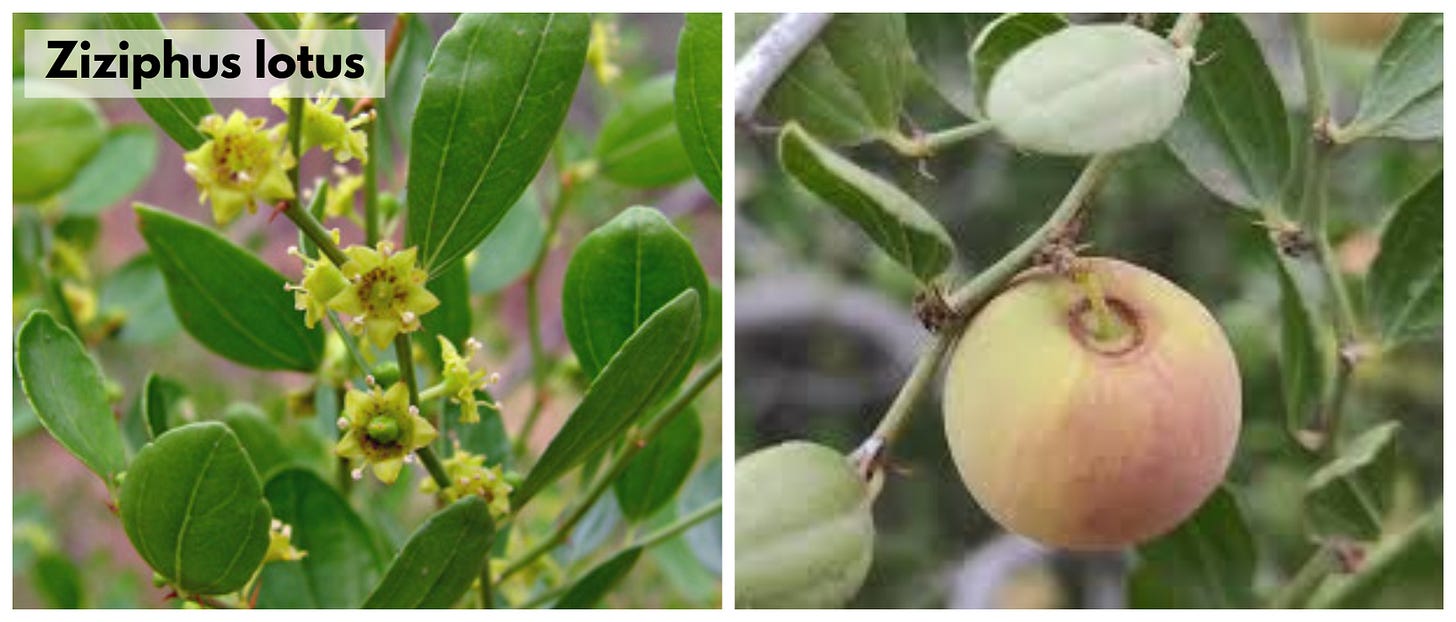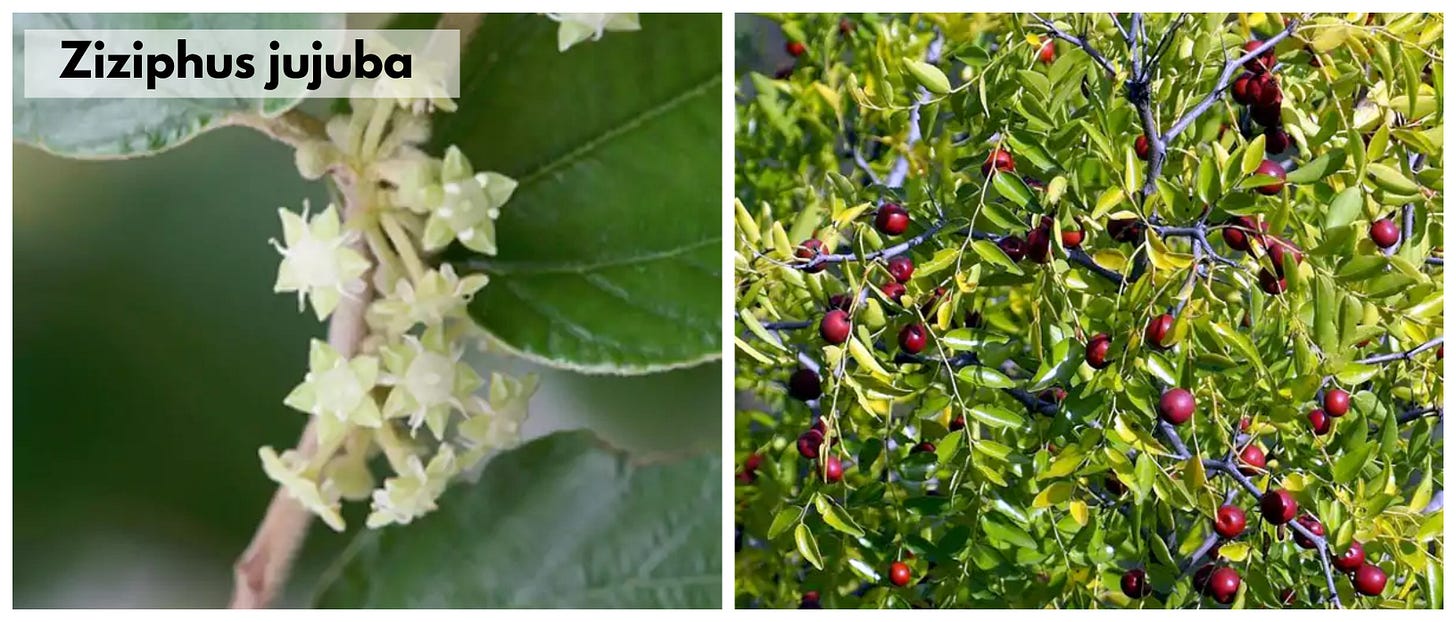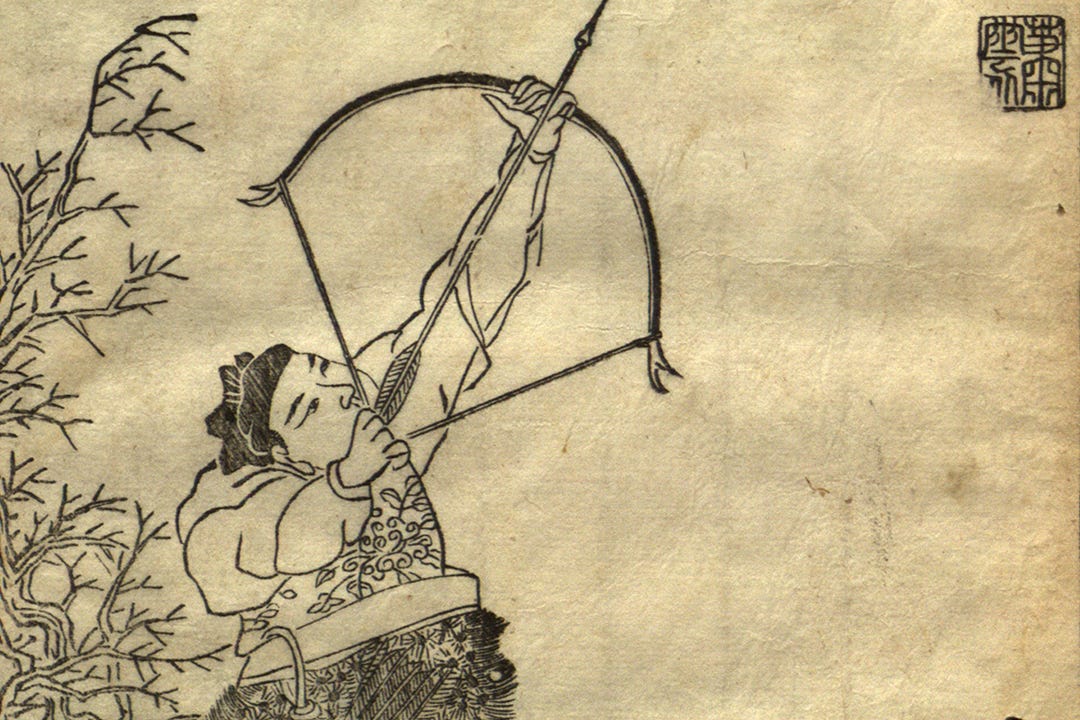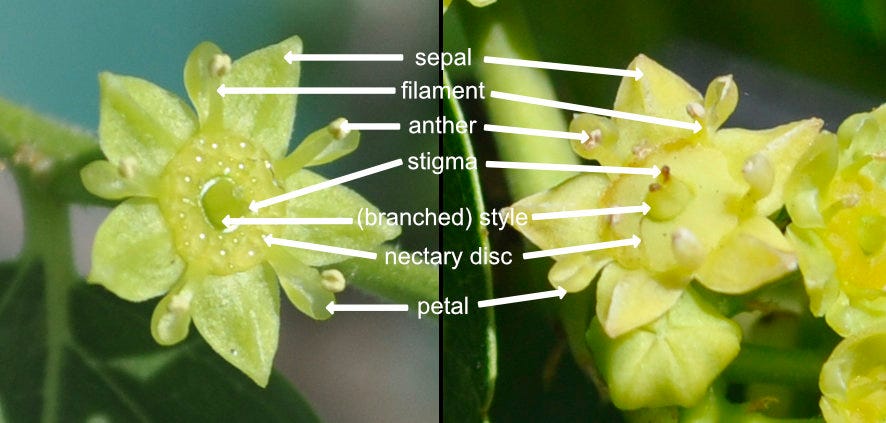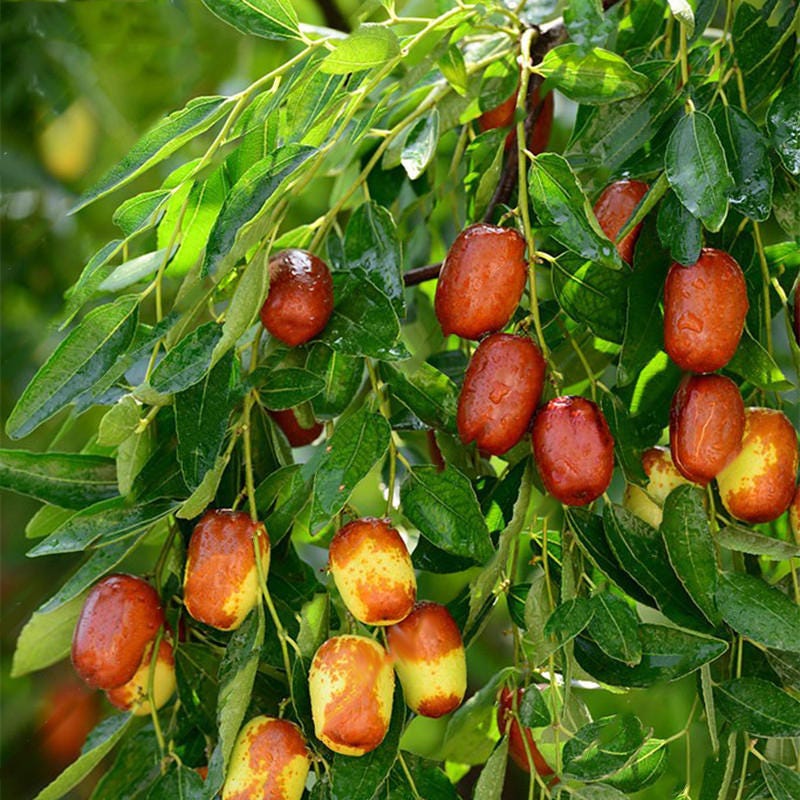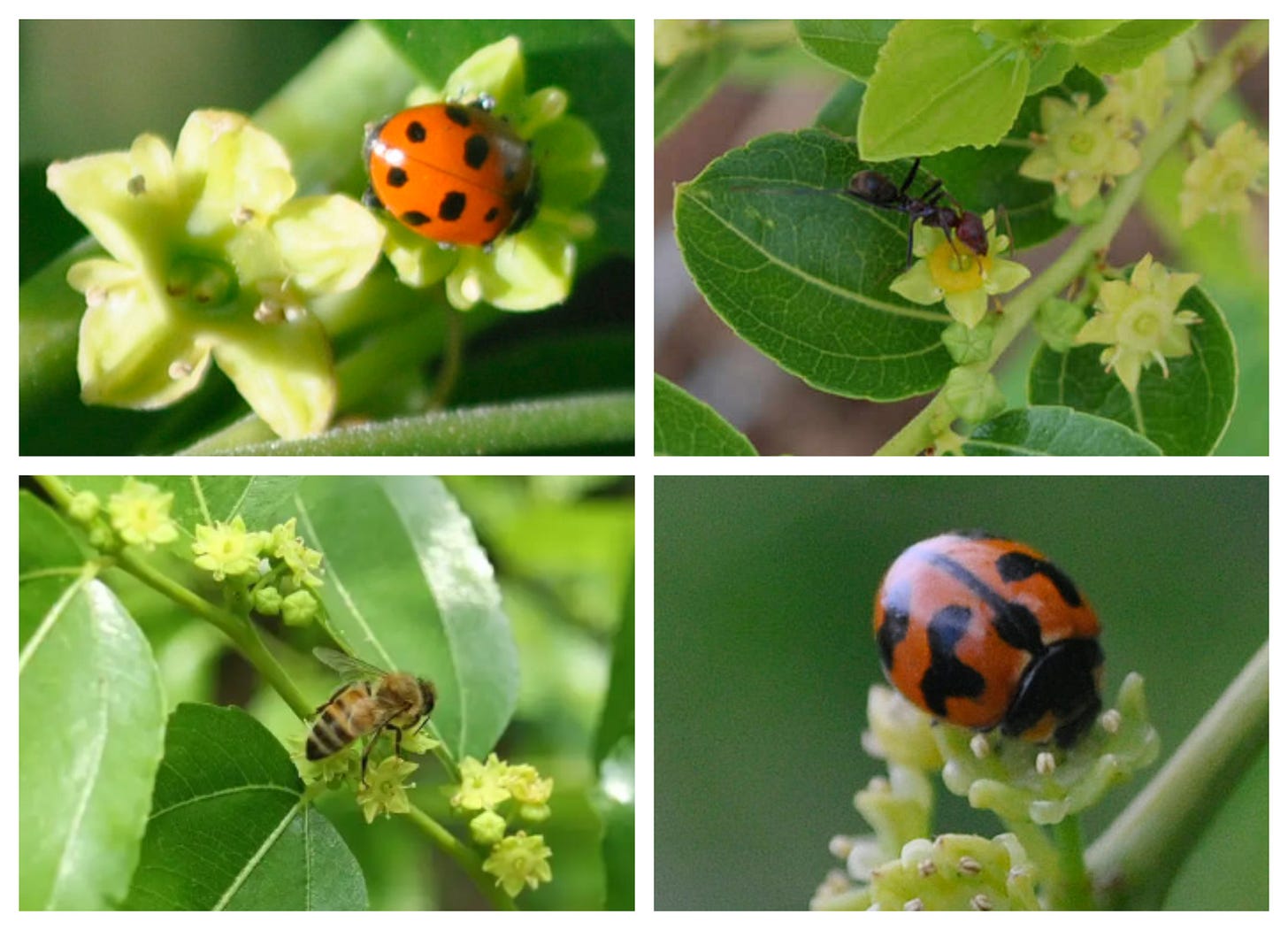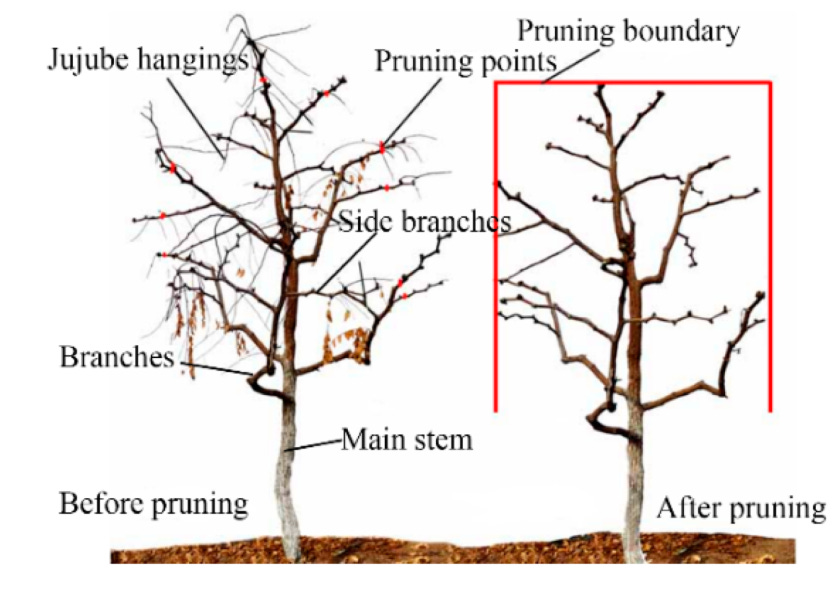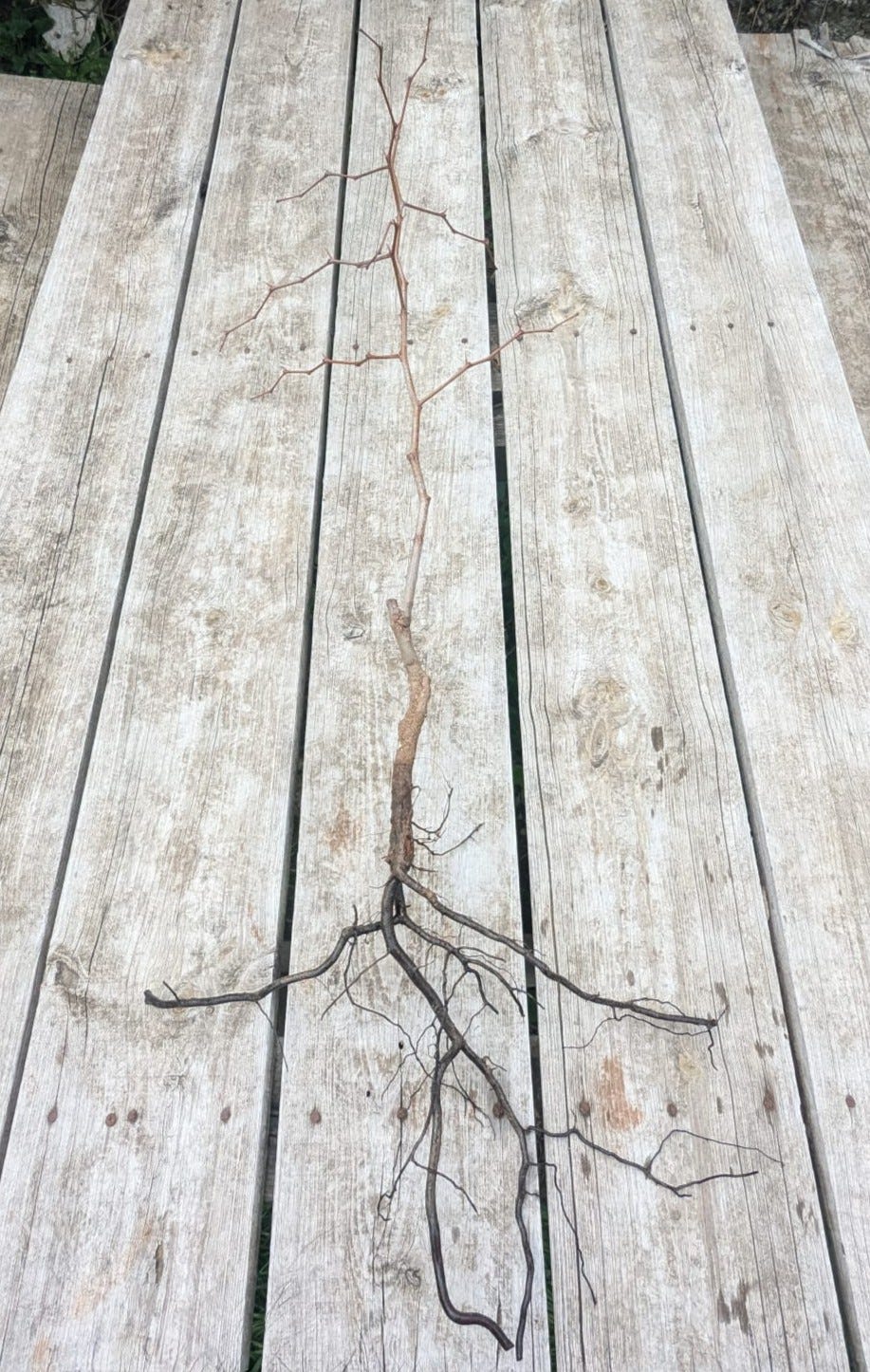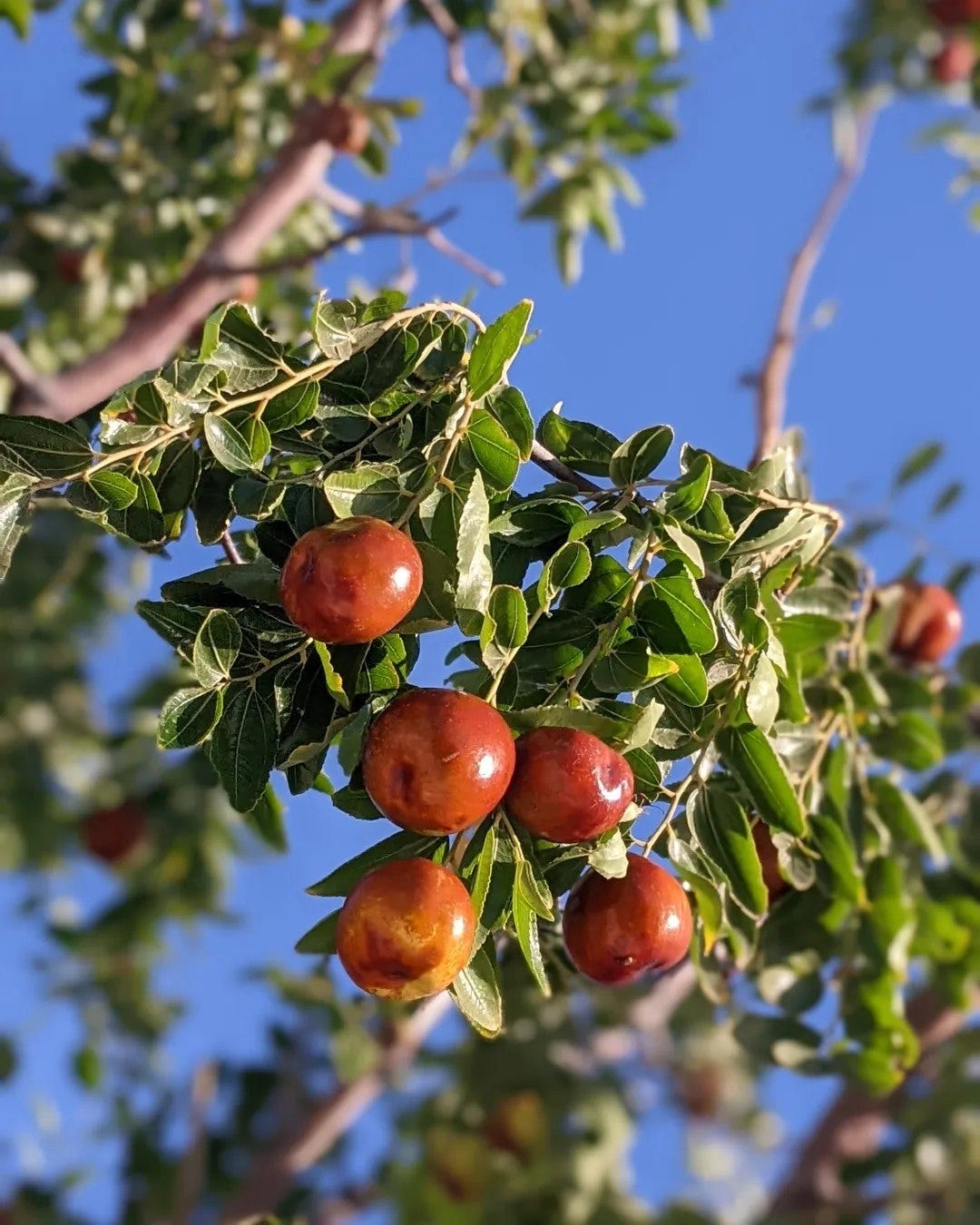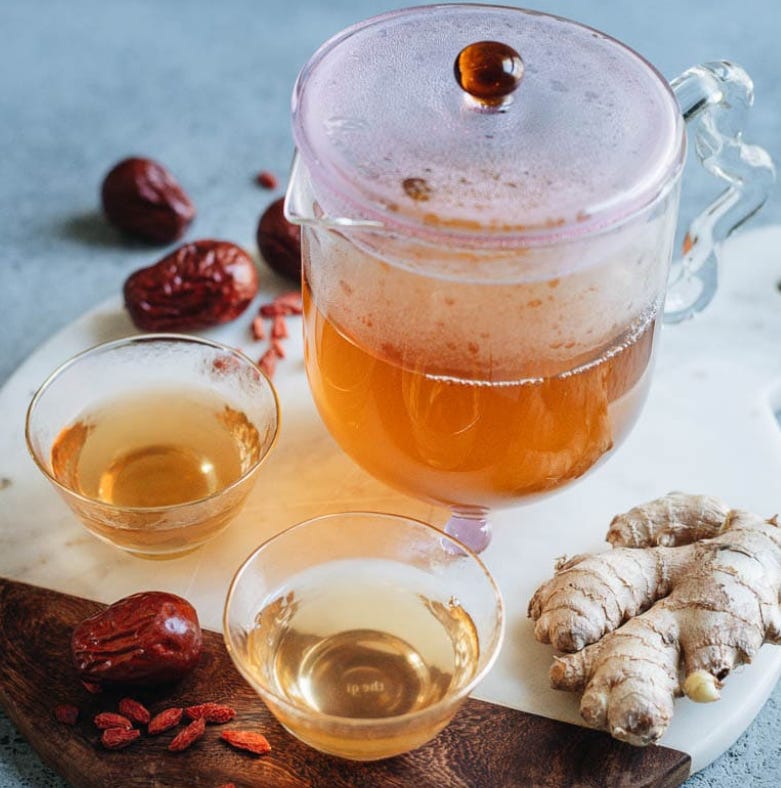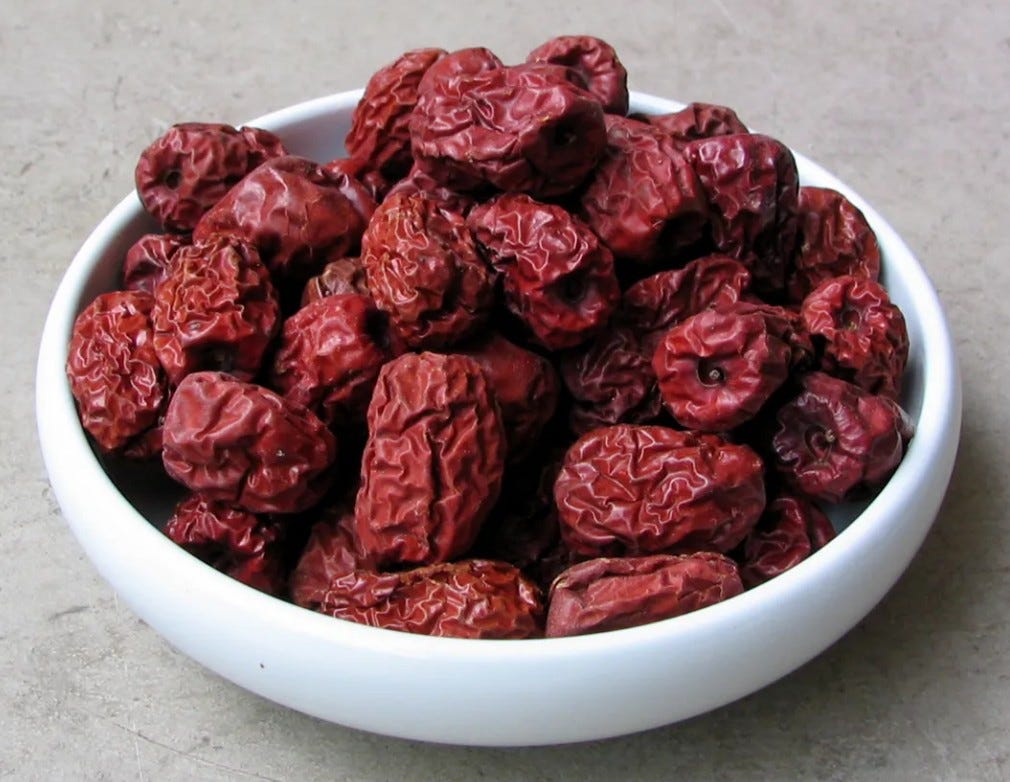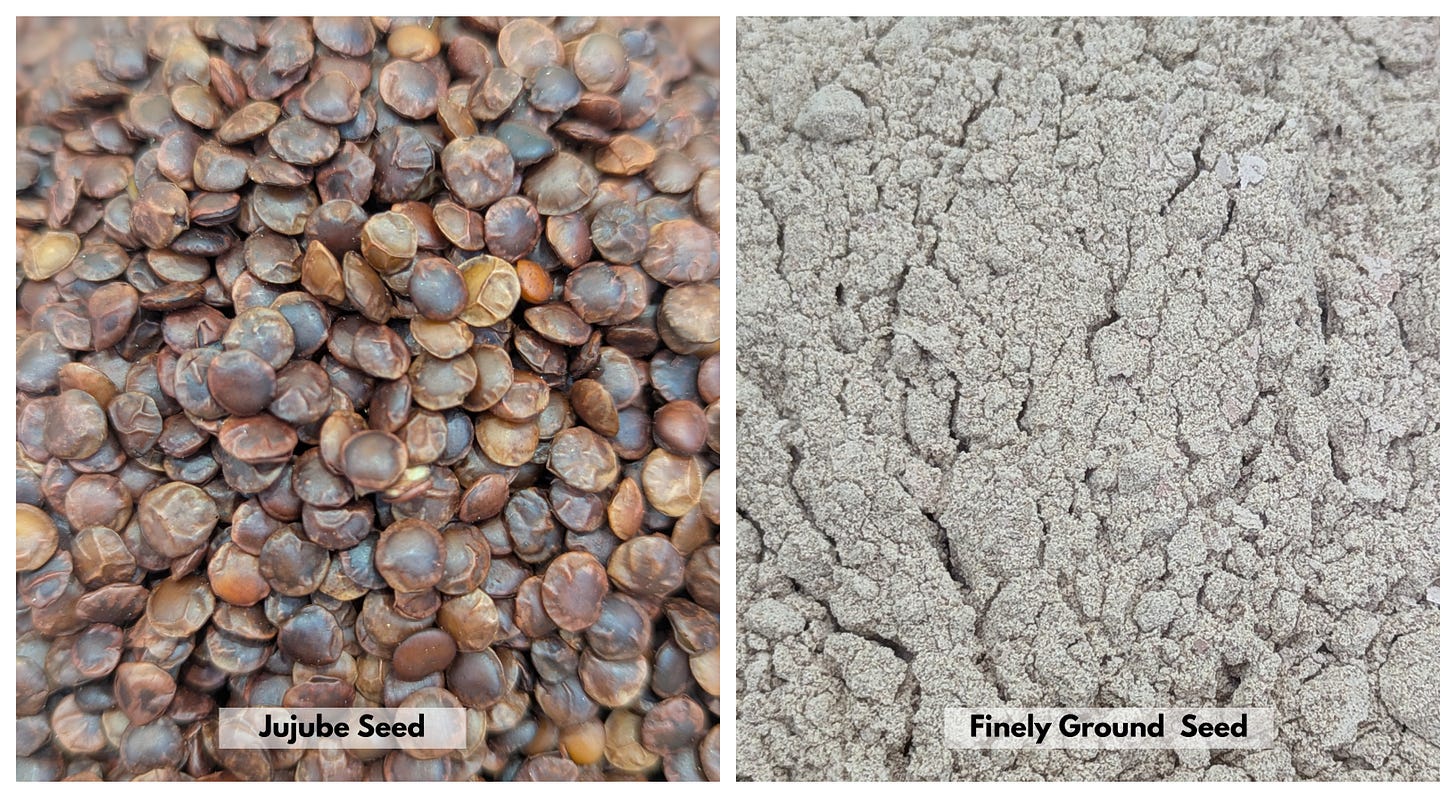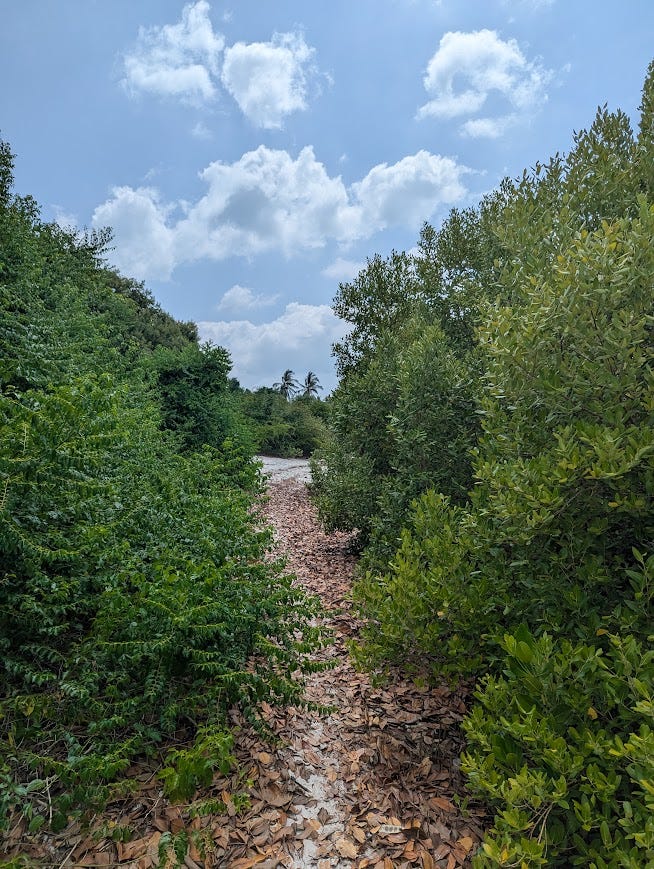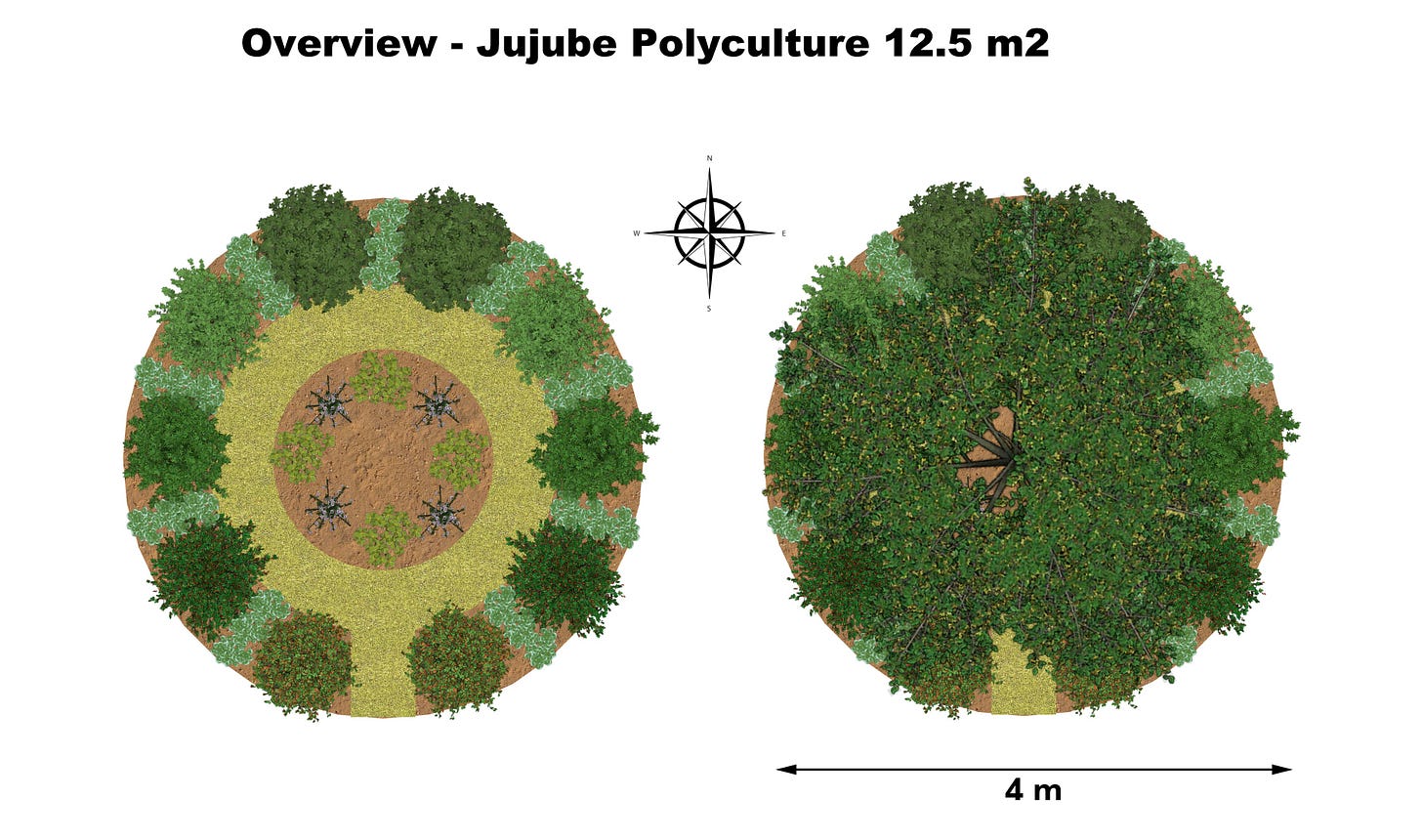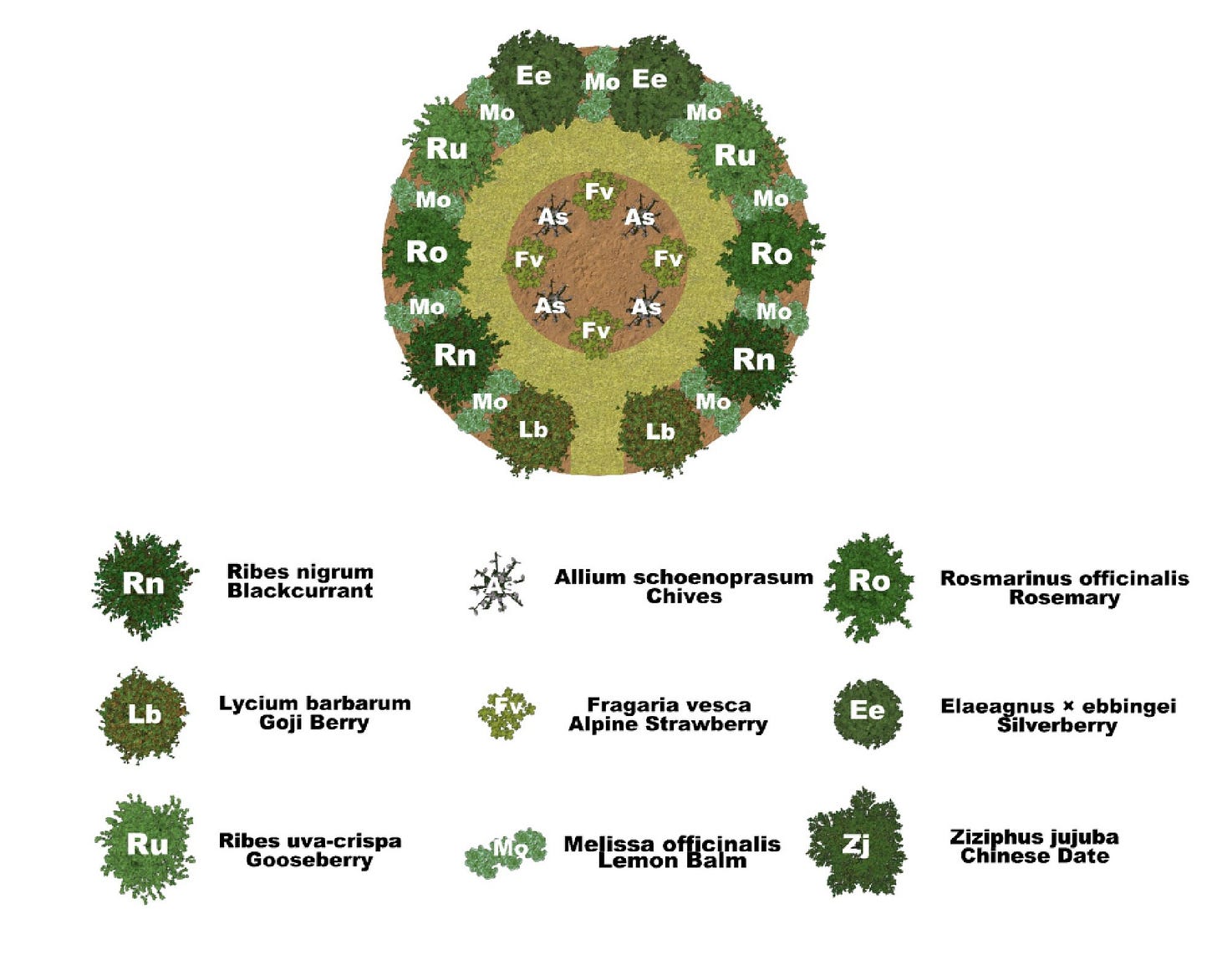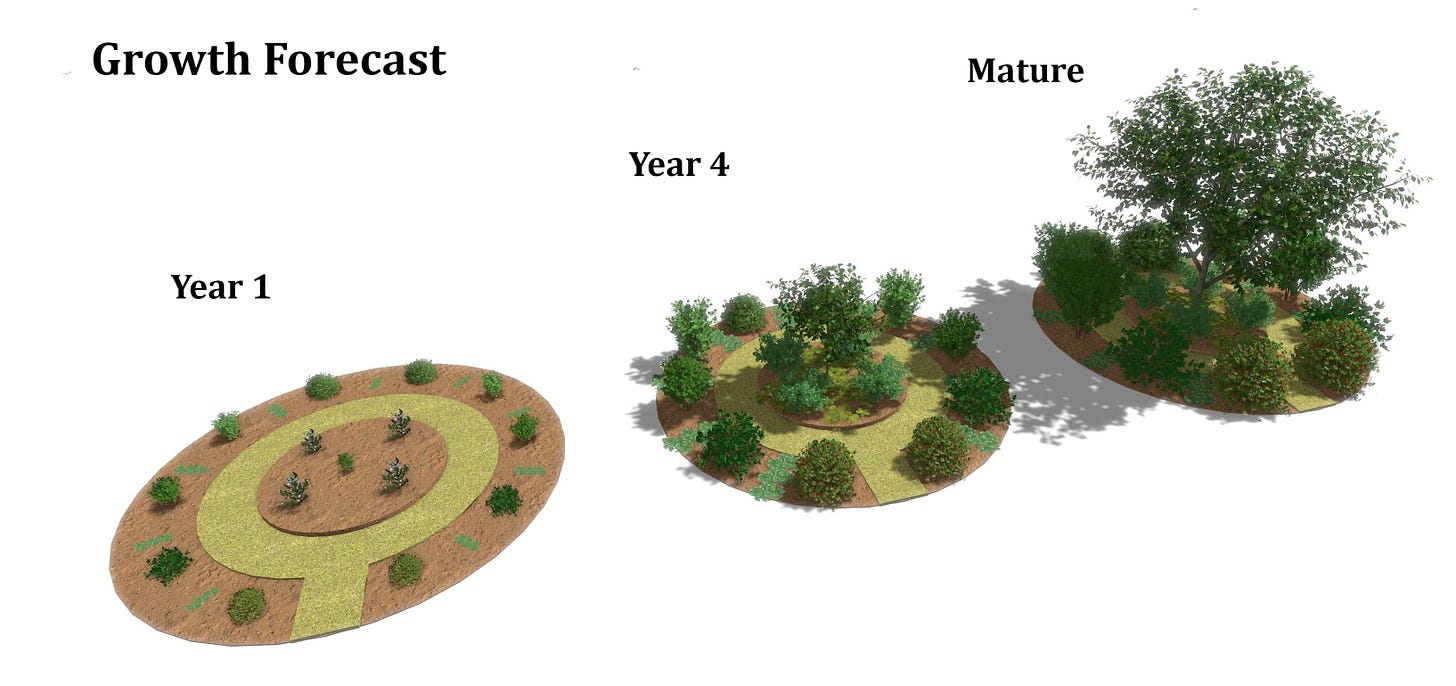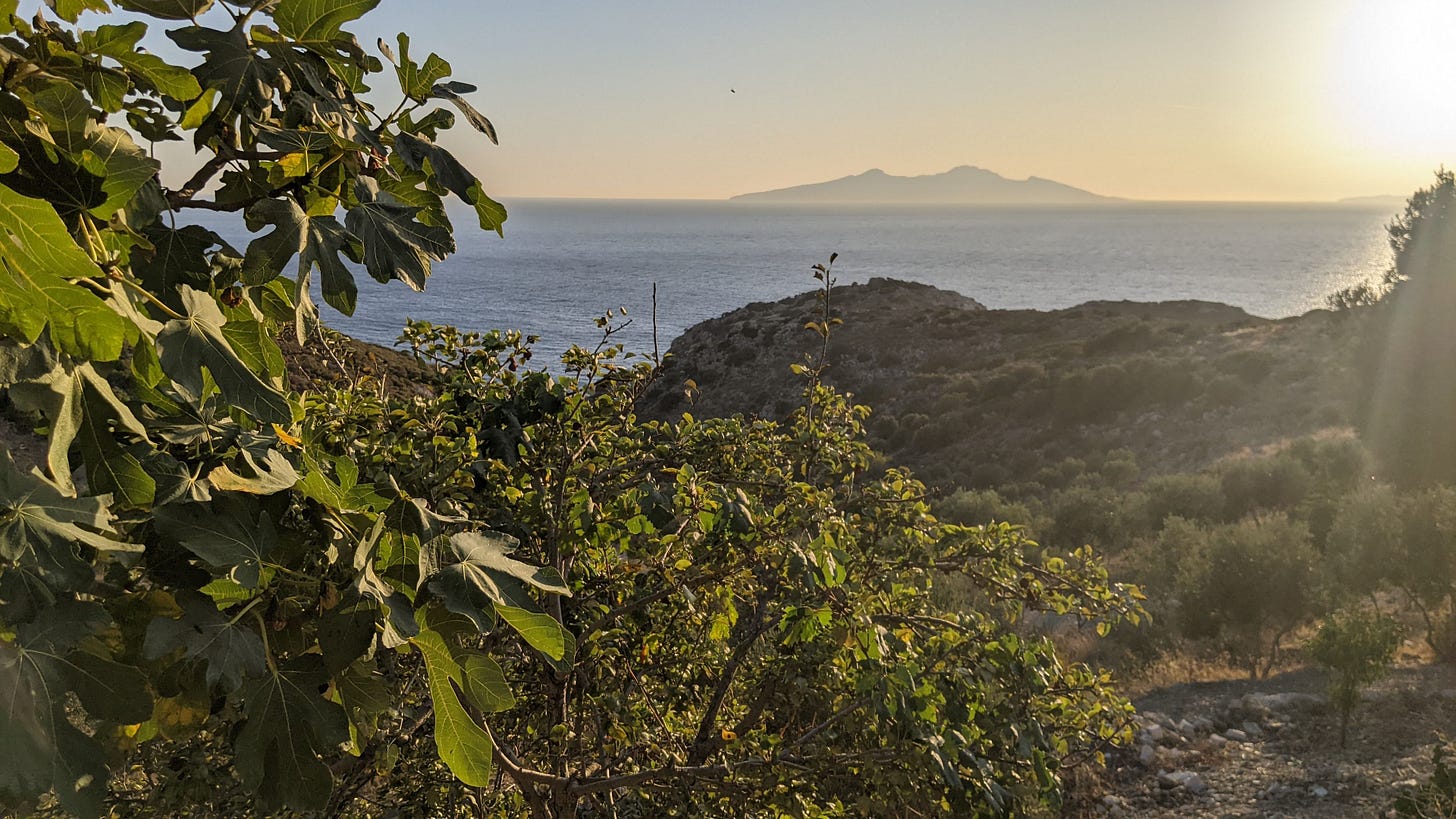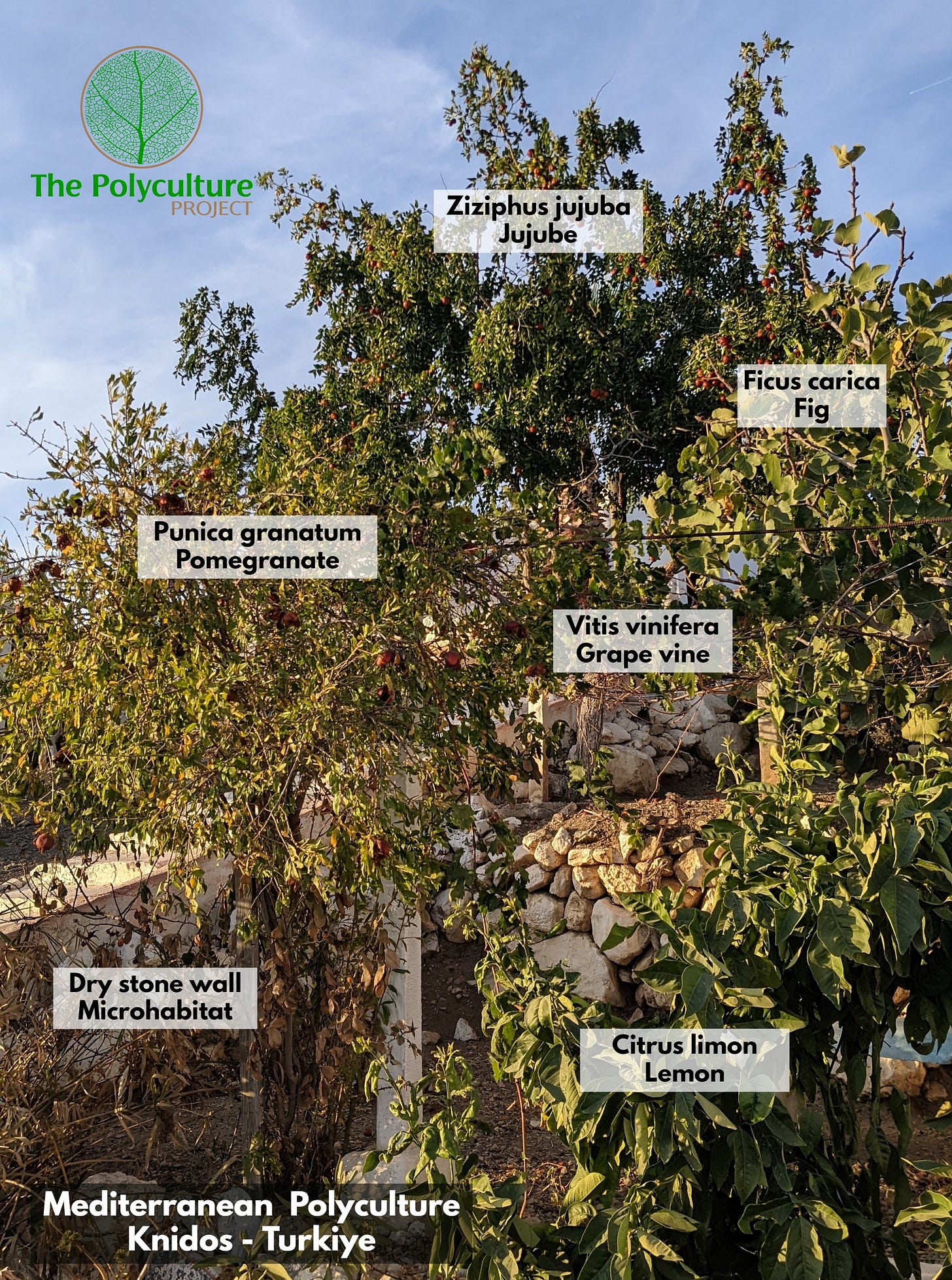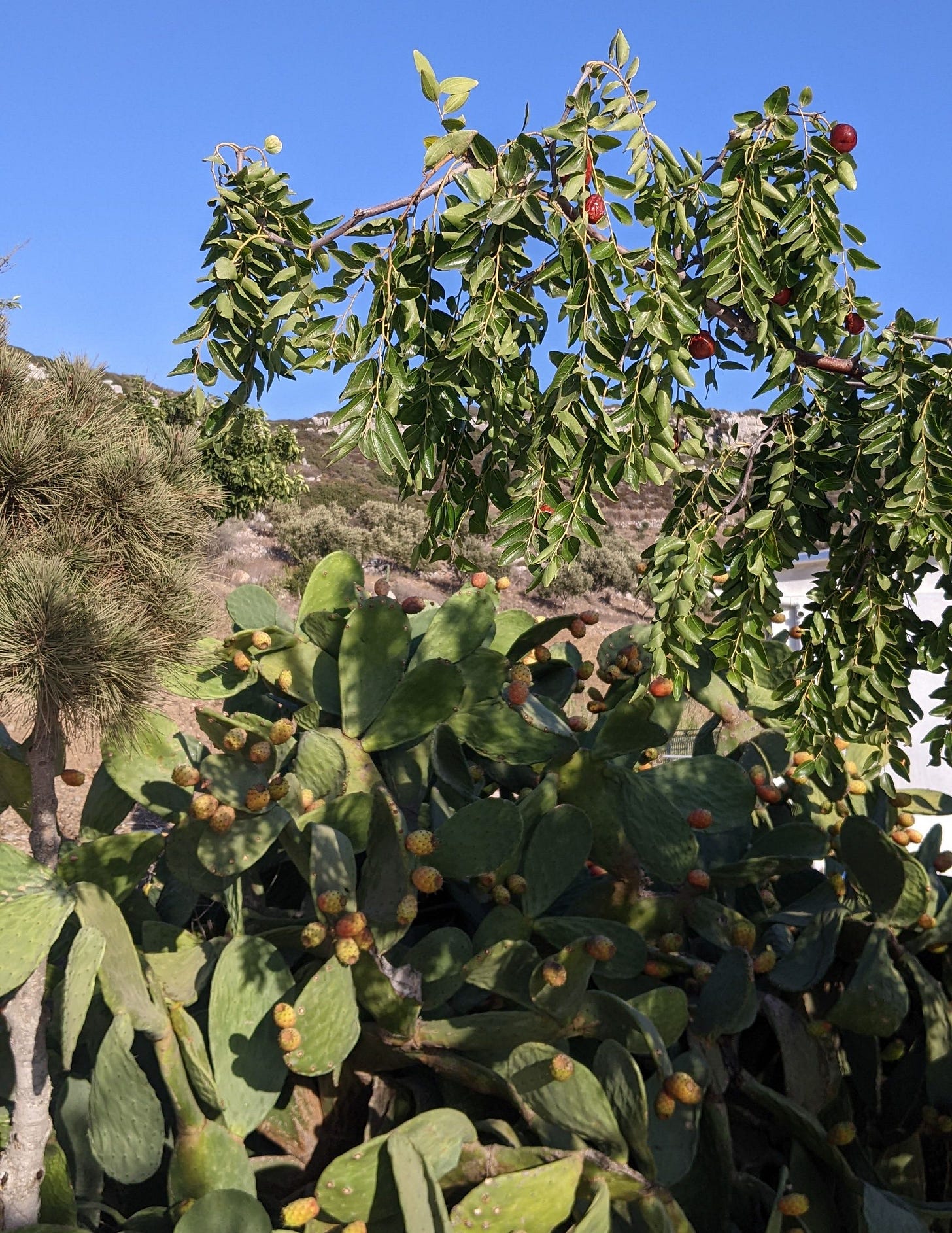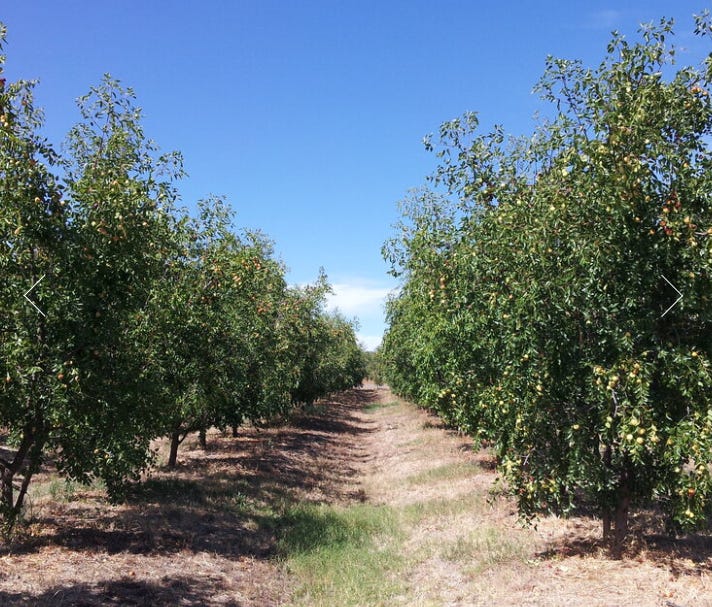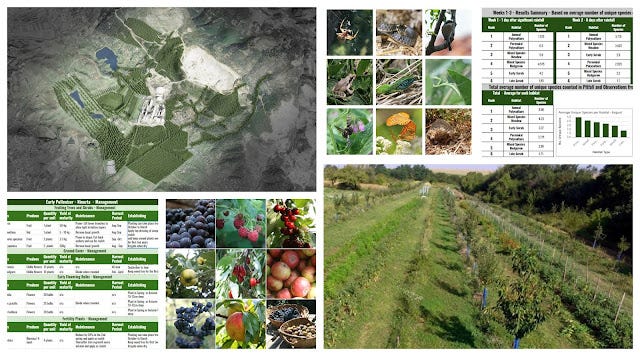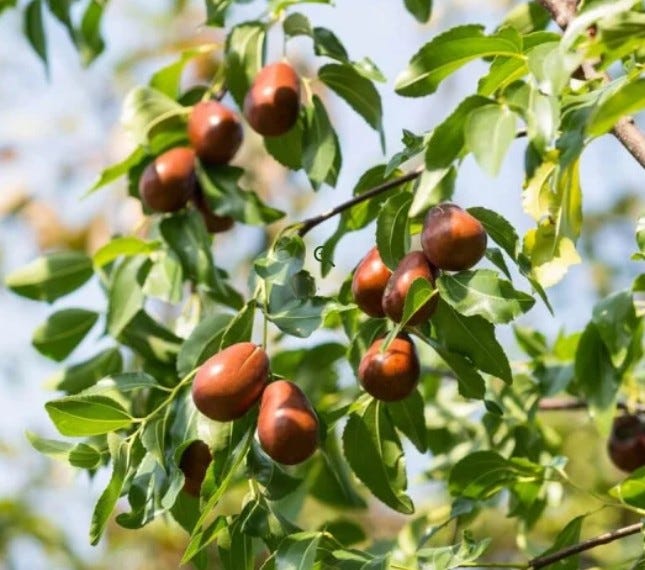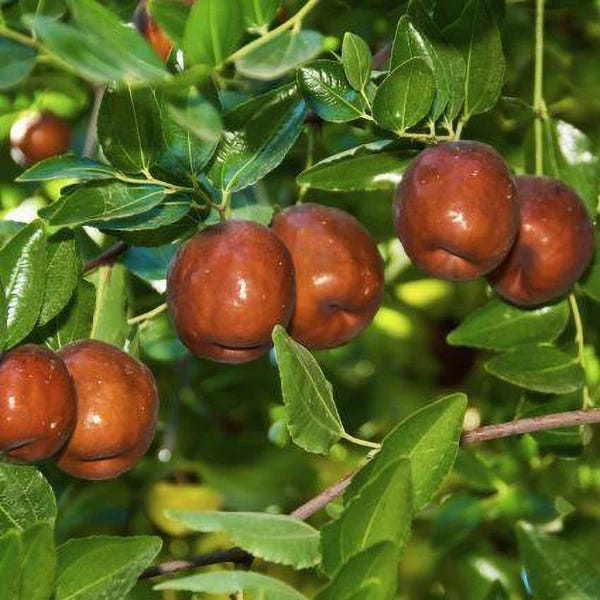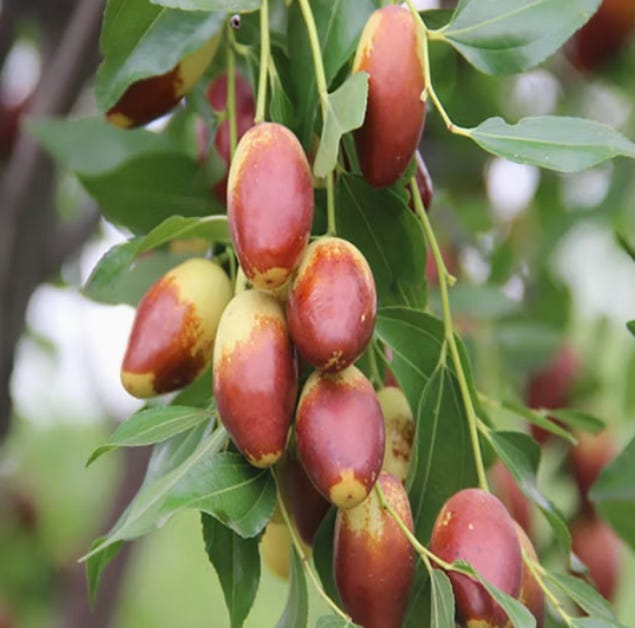Jujube trees produce a fruit cherished in Asia for thousands of years, yet they remain somewhat exotic in the Western world. With their sweet, apple-like flavor, impressive nutritional benefits, pest resistance, and drought tolerance, these hardy trees are perfect for forest gardens, permaculture gardens, and regenerative landscapes.
Let’s dive into the world of jujubes and discover why they deserve a spot in your garden!
Will start by taking a broad look at the Ziziphus genus and then narrow down to the most versatile species, Ziziphus jujuba where we look at the history of the plant, how to grow and take care of it, the uses of Jujube, growing Jujube in polycultures, permaculture, and agroforestry, and we'll introduce some hardy cultivars that we're offering from the nursery this season, perfect for growing in temperate climates including all over Europe.
Lets get started!
The Ziziphus Genus
The Ziziphus genus belongs to the family Rhamnaceae and comprises around 40 species of spiny shrubs and small trees. These plants are widely distributed in tropical and subtropical regions, particularly in Asia, Africa, Australia, and the Americas. Ziziphus species are drought-tolerant and thrive in arid and semi-arid environments, making them important for soil conservation and reforestation where they also provide habitat and food for various wildlife, including birds and insects.
Although they are primarily found in tropical and subtropical parts of the world that are subject to drought and hot weather, the most widely cultivated species are able to withstand temperatures below -15C and are very suitable for growing in Temperate and Mediterranean climate .
Plant Form
The genus includes a variety of growth forms, primarily spiny shrubs and small trees, adapted to diverse environments. Most species are dense, thorny shrubs (1–3 m tall), forming thickets in arid regions. Others, such as Ziziphus jujuba and Ziziphus spina-christi, grow into small to medium-sized trees (5–12 m), with cultivated varieties often pruned for fruit production. Some species exhibit a scrambling or semi-climbing habit, using hooked thorns to support themselves on nearby vegetation and can make great ground covers for dry and stony soils. In harsher conditions, Ziziphus species may become dwarfed (<1 m) or stunted. Wild varieties typically have pronounced thorns, while cultivated types may be thornless.
Ziziphus species offer diverse benefits: their fruits, rich in vitamins, minerals, and antioxidants, are consumed fresh, dried, or processed into jams and juices, while various plant parts (leaves, bark, roots, and fruits) are utilized in traditional medicine systems like Ayurveda and Traditional Chinese Medicine that we’ll look at closer later in the post.
Additionally, some species provide timber and fodder for livestock. Many species in the genus hold cultural and religious importance in many regions with the jujube tree’s fruit thought to grant eternal life, tying it to themes of longevity and transcendence.
Notable Species
From the 40 species distributed across the world, probably the most prominent species are as follows :-
Ziziphus mauritiana - Indian jujube: Commonly grown in South Asia for its fruit, which is consumed fresh or dried. The specific name ‘mauritiana’ derives from the island of Mauritius where the species was perhaps first formally collected.
Ziziphus spina-christi - Christ's thorn jujube: A species with religious significance, often associated with the crown of thorns in Christian tradition. Very popular all over west Asia and in BWh climate (KCC)
Ziziphus lotus: A species native to the Mediterranean region, historically significant in ancient cultures.
Ziziphus jujuba - Chinese date: One of the most well-known species, cultivated for its sweet, edible fruit. It is widely used in traditional medicine and cuisine.
The two major domesticated jujubes of commercial significance are Z. mauritiana and Z. jujuba.
Ziziphus jujuba - Chinese date will be the focus for the rest of this post.
Overview of Ziziphus jujuba - Chinese date
Scientific Name: Ziziphus jujuba
Family: Rhamnaceae (Buckthorn family)
Common Names: Chinese date, jujube, red date, Korean date
Growth Habit: Small to medium-sized tree (5–12 m tall) with thorny branches
Leaves: Shiny green, oval with three prominent veins
Flowers: Small, yellow-green, fragrant
Fruit: Drupe (stone fruit), starts green and turns red or dark brown when ripe; sweet and chewy when dried
USDA Hardiness Zones: Optimal Range: Zones 5–10 (some varieties tolerate Zone 4 with protection). Zone 5–9: Most commercial varieties thrive (e.g., ‘Li’, ‘Lang’). Zone 10+: Possible but may lack winter chill for fruiting in tropical climates.
Cold Tolerance: Mature trees survive -20°C . Young trees need winter protection (mulch/row covers) in Zone 5–6.
Extreme Heat: Handles over 43°C (110°F) if watered occasionally.
Drought Resistance: Deep roots access groundwater; survives long dry spells once established (ideal for xeriscaping).
Soil Adaptability : pH Range: 6.0–8.5 (tolerates alkaline soils better than most fruit trees).
Soil Types: Grows in poor, sandy, rocky, or saline soils but prefers well-drained loam.
Waterlogging: Susceptible to root rot in clay/heavy wet soils.
Wind: Tolerates strong winds (used as windbreaks in arid regions).
Pollution: Handles urban air pollution well.
Pests/Diseases: Few major issues (organic-friendly due to natural pest resistance).
A Brief History of Ziziphus jujube
The plant has a rich history that dates back over 4,000 years. Native to China, where it has been cultivated for its fruit, medicinal properties, and its wood, the tree spread along the Silk Road across Central Asia, reaching the Middle East, North Africa, and eventually Europe and the Americas.
The name "jujube" comes from the Greek word for the plant ziziphon, which was later adapted into Latin as ziziphus. Today, jujubes are grown worldwide, from arid regions to temperate climates, thanks to their adaptability and resilience.
The Legend of the Jujube Tree in the Moon
While researching for this post I came across the The Legend of the Jujube Tree in the Moon, a captivating tale deeply rooted in Chinese folklore.
The tale begins with Houyi, a legendary archer, and his wife, Chang'e. Back in their day there were ten suns in the sky, causing the earth to scorch and suffer. Houyi, with his incredible archery skills, shot down nine of the suns, saving the earth and its people.
As a reward for his heroism, the Queen Mother of the West (Xi Wangmu) gave Houyi an elixir of immortality. Houyi did not want to become immortal without his beloved wife, Chang'e and decided to keep the elixir at home, planning to share it with her.
One day, while Houyi was away, Chang'e discovered the elixir and drank it out of curiosity, after consuming the elixir she began to float upward, ascending to a cold and desolate moon. The Gods noticed her tragic accent to the moon and to ease her loneliness gifted her a jujube tree that was magical and immortal, bearing fruit that could grant eternal life.
During the Mid-Autumn Festival to this day people honor Chang'e and the moon by eating mooncakes, a traditional pastry, and sharing stories about the moon. Families gather to admire the full moon, believing that they can see the outline of the jujube tree on its surface.
I also found references to Jujube in the folklore and religion of Indian, Korean, Persian, African, Roman, Greek, Islamic and Buddhist traditions.
Sexual Reproduction in Ziziphus jujuba - Chinese Date
The plant reproduces through a fascinating sexual reproduction process that relies on cross-pollination. Some jujube trees are dioecious (with separate male and female plants), but most varieties produce hermaphroditic flowers containing both male and female parts.
Flower Structure & Pollination
Jujube trees produce clusters of small, fragrant, yellowish-green flowers that grow along the stems. The male flowers produce abundant pollen but cannot develop fruit, while female flowers contain ovaries that will only swell into fruit after successful pollination. On rare occasions, you may find perfect flowers containing both male and female reproductive structures in the same flower.
Nature has designed an efficient pollination system where bees and other insects serve as the primary pollen carriers, attracted by the flowers' sweet fragrance. While wind may occasionally assist in pollen transfer, insects remain the most effective pollinators. Cross-pollination between plants results in better fruit production so it is best to grow multiple cultivars.
Fertilization & Fruit Development
The magic begins when a pollen grain reaches a receptive female flower. The pollen tube grows down into the ovary to complete fertilization, initiating the development of the characteristic drupe fruit. These stone fruits undergo a remarkable transformation, starting as small green spheres that gradually mature through yellow and red stages before reaching their final brown hue at full ripeness. Inside the sweet flesh of the fruit, the hard-shelled seed protects the plant embryo (seed), carrying the genetic blueprint for future generations.
Seed Dispersal & Germination
Mature jujube fruits have evolved an effective seed dispersal mechanism through animal participation. Creatures that consume the tasty fruits later deposit the undigested seeds in new locations with their droppings, a process known as zoochory. The seeds exhibit an interesting survival strategy through dormancy, often requiring exposure to cold temperatures (about 2-3 months at 4°C) to break this dormant state. This cold stratification requirement prevents premature germination and ensures seedlings emerge when conditions are favorable for growth.
Global Fruit Production
China accounts for roughly 90% of the world's supply of Jujube fruits, with an estimated 8–10 million metric tons annually. Other significant producers include India (200,000–500,000 tons, mostly from wild and semi-cultivated trees), Iran (50,000–100,000 tons), and smaller-scale cultivation in Pakistan, Afghanistan, the Middle East, and North Africa. In recent years, the U.S., Australia, Southern Europe (Italy, Spain), and South America have also begun expanding commercial jujube production, though output remains limited.
Ideal Growing Regions
Ziziphus jujuba thrives in a variety of climates but grows best in Mediterranean regions like California, Spain, and Italy, where warm, dry summers and mild winters promote optimal fruiting. It is also exceptionally well-suited to arid and semi-arid zones, including the Middle East, North Africa, and parts of Australia, thanks to its deep-rooted drought resistance. Additionally, jujube trees adapt well to cold-winter regions such as China’s Yellow River Valley and the U.S. Midwest (with some winter protection in extreme cold), where they can endure freezing temperatures while still producing reliable harvests. This versatility makes the jujube a resilient choice for both commercial orchards and home gardens in diverse environments.
Challenging Areas
Ziziphus jujuba struggles in tropical lowland climates where the lack of winter chill hours disrupts its fruiting cycle, leading to poor yields. Additionally, it performs poorly in waterlogged or poorly drained soils, as standing water promotes root rot—planting in raised beds or improving drainage is essential in these conditions. While jujube is highly adaptable, these environments require special modifications for successful cultivation.
Why Grow Jujube?
Jujube trees are a dream for growers. Here’s why:
Drought-Tolerant: Jujubes thrive in hot, dry climates and require minimal water once established.
Low Maintenance: They are resistant to pests and diseases, making them easy to grow organically.
Versatile Fruit: The fruit can be eaten fresh, dried, or cooked, offering a range of culinary possibilities.
Nutritional Powerhouse: Jujubes are packed with vitamin C, antioxidants, and fiber, making them a healthy addition to your diet.
Beautiful Trees: With their glossy green leaves and delicate yellow flowers, jujube trees are also ornamental.
Ecology: The plants provide a source of food for bees and other invertebrates and, when grown in thickets or as hedging the thorny branches provide a perfect loafing and nesting habitat for wildlife.
How to Grow Jujube
Climate and Soil
Jujubes prefer warm, sunny climates and can tolerate temperatures as low as -20°C once mature. They grow best in well-drained soil but can adapt to poor, sandy, or alkaline soils.
Planting
Location: Choose a sunny spot with plenty of space (jujube trees can grow up to 10 meters tall, though dwarf varieties are available).
Timing: Plant in spring to allow the tree to establish before winter. If planting in Autumn mulch young trees for their first winter.
Spacing: Space trees 4-6 meters apart to ensure good air circulation and sunlight.
Key Considerations for Planting
Winter Chill Requirement: 100–500 hours (varies by cultivar; low-chill types exist).
Frost Risk: Blooms late (spring), avoiding frost damage in most climates.
Humidity: Prefers dry climates; fungal risks increase in high humidity.
Plant with at least one other cultivar for the benefits of cross pollination that will result in higher and more reliable fruit yields
Care
Watering: Water regularly during the first year, then reduce frequency. Mature trees are highly drought-tolerant. 20 L per tree per week without rain during the hot season should be adequate.
Pruning: Prune in late winter to shape the tree and remove dead or crossing branches. Prune excessive growth in the summer once the fruit is set to redirect growth to the fruits.
Fertilizing: for the first 3 - 5 years after planting, 10 -15L of good compost applied around tree in early spring will encourage growth and fruiting. If growing these trees in a forest garden there should be no need to apply more compost after the 5th year.
Propagation
Propagation of Ziziphus jujuba can be done through seeds, cuttings, or grafting, with each method having its advantages.
Seed - Seed propagation is simple but results in variable fruit quality, as jujube seeds exhibit cross-pollination variability; stratification (cold treatment) for 2–3 months improves germination.
Vegetative - hardwood ensure genetic consistency but may have lower success rates especially without rooting hormones.
Grafting - The most reliable method is grafting (e.g., cleft or whip grafting), which preserves desirable traits from superior cultivars and accelerates fruiting (within 2–3 years)
Air layering is also effective but less common.
For best results, propagation should be done in spring or early summer, using well-drained soil and consistent moisture until establishment. Grafted plants are preferred for commercial orchards to maintain fruit quality and yield. Seedlings take 4–5 years to bear fruit however grafted plants will produce fruiting 2–3 years.
Harvesting
Jujubes ripen in late summer to early fall. The fruit turns from green to reddish-brown when ripe and develops a sweet, crisp texture. For drying, harvest when the fruit is fully ripe and slightly wrinkled.
Welcome to our Online Store where you can find Forest Garden/ Permaculture plants, seeds, bulbs, and Polyculture multi-packs along with digital goods and services such as Online Courses, Webinars and eBooks. We hope you enjoy the store and find something you like. It's your purchases that keep our Project going.
You can also find our full list of trees. shrubs and herbs for forest gardens on our nursery website.
Culinary Uses of Jujube
Jujubes are incredibly versatile in the kitchen. Here are some ideas:
Fresh: Enjoy them straight from the tree for a sweet, apple-like snack.
Dried: Dried jujubes are chewy and sweet, similar to dates. They make a great addition to trail mixes or baked goods.
Tea: Simmer dried jujubes with ginger and honey for a soothing herbal tea.
Jams and Preserves: Cook jujubes with sugar and lemon juice to make a delicious spread.
Savory Dishes: Add dried jujubes to stews, tagines, or rice dishes for a touch of sweetness.
Medicinal Benefits of Jujube
Jujubes have been used in traditional medicine for centuries with modern research supporting many of these benefits:
Sleep Aid: Jujube is known to promote relaxation and improve sleep quality.
Digestive Health: The fiber content helps regulate digestion and prevent constipation.
Immune Support: High in vitamin C and antioxidants, jujubes can boost your immune system.
Stress Relief: Jujube is believed to have calming properties, reducing anxiety and stress.
Jujube’s use in TCM - Traditional Chinese Medicine
Ziziphus jujuba is a key herb in Traditional Chinese Medicine (TCM) with a long history of use. Its dried fruits, seeds, and sometimes bark are incorporated into remedies for their nourishing, calming, and restorative properties.
The Key Uses in TCM include
Nourishes Blood & Qi – Used to tonify the spleen and stomach, improving digestion, fatigue, and anemia.
Calms the Mind – Prescribed for insomnia, anxiety, and irritability, often combined with herbs like suanzaoren (Ziziphus spinosa seeds).
Moistens Dryness – Alleviates dry cough, sore throat, and constipation by promoting fluid production.
Supports Heart Health – Believed to strengthen the heart and stabilize blood pressure.
Detoxifies & Reduces Inflammation – Used in formulas for skin conditions and mild infections.
Common Forms:
Dried jujube fruits (Da Zao) – Eaten directly, boiled in soups, or decocted in herbal teas.
Jujube seeds (Suan Zao Ren) – Processed (often roasted) to enhance sedative effects.
Herbal combinations – Found in formulas like Guì Pí Tāng (for spleen Qi deficiency) and Gān Mài Dà Zǎo Tāng (for emotional distress).
Other Uses of Ziziphus jujuba
Shade Trees - In agroforestry the tree is often used as a shade tree providing dappled sunlight. In Turkey and Lebanon you will often find Jujube planted around the edges of olive, pomegranate, vineyards and fig orchards.
Hedging/Windbreak – Dense growth and thorns make it effective for barriers and branches are used as natural barbed wire in rural areas.
Livestock fodder – Leaves are fed to silkworms and goats in some regions.
Hardwood carpentry – Reddish-brown wood used for furniture (especially in rural China) as well as durable and shock-resistant tool handles and musical instruments (e.g., dizi flute mouthpieces)
Charcoal production – High-quality fuel source.
Ecology - The plant is a great provider for Bees with flowers producing nectar and pollen source for honeybees. Birds and small mammals nest in its branches.
Erosion control – Deep roots stabilize soil on slopes.
Dye production – Bark and leaves yield tan/yellow pigments for textiles.
Biomass fuel – Pruned branches as firewood and logs.
Papermaking – Fiber from bark and wood pulp.
Perfumery – Flower fragrance extracted for aromatherapy.
Bonsai cultivation – Popular in Asian bonsai traditions due to gnarled trunk aesthetics.
Coral reef restoration – The most unusual use I came across. In Vietnam, jujube wood structures help rebuild marine ecosystems.
Growing Jujube In Polycultures
The plants are well suited to polyculture and Forest Gardens and can be used for a variety of different purposes within regenerative landscapes. Being sun loving they are best placed as an upper canopy tree if grown for fruit but can also be used in the lower canopy and shrub layers if the intention is to grow for biomass, wood or to serve as hedging or habitat
Jujube Mandala Polyculture
Here is an example of a Jujube Polyculture we will be planting out in our Forest Garden over the coming seasons.
If you would like the full plans for this polyculture and many more, including a detailed species list, step by step instructions how to build the bed layout, plant out and manage the polyculture, become an annual or monthly subscriber ($70 per year or $7 per month).
Jujube Polyculture - Datça Peninsula, Muğla Province, Türkiye
If you ever have the pleasure to visit the Datça Peninsula in Türkiye, Knidos, an ancient Greek/Roman port is one of the highlights in the area. The nearby Goknar Knidos Nature Hotel has a beautiful garden surrounding the property and awesome views of the coastline and surrounding area and features a few great polycultures that include Ziziphus jujuba.
The species and cultivar selection in the garden has obviously been guided by a knowledgeable and loving hand over a many decades and some great examples of Mediterranean polyculture can be found around the property , providing a bounty of food for the garden and support to wildlife.
The dry stones walls around the property provide the perfect habitat for Reptiles, small mammals and invertebrates. Not visible in the above photo but under the Ziziphus jujuba - Jujube is an impressive cluster of Opuntia ficus-indica - Barbary fig, full of ripe fruits.
Ziziphus jujuba for Orchard and Agroforestry
For growing Ziziphus jujuba in an orchard or agroforestry scenario optimal spacing depends on tree size (dwarf, semi-dwarf, or standard), rootstock, soil fertility, and management practices (manual vs. mechanized). Here are some general guidelines:
Standard Spacing (Most Common) - 6–8 meters (20–26 ft) between trees, 6–8 meters between rows. Suitable for full-sized trees (up to 8–12 m tall if unpruned).Allows for good air circulation, reducing fungal disease risk and provides space for organic mulching, companion planting, and manual weeding.
High-Density Planting (Semi-Dwarf or Pruned Trees) - 4–5 meters (13–16 ft) between trees, 5–6 meters (16–20 ft) between rows. Works for smaller cultivars or trees kept at 4–6 m height via pruning. Better for early yields but requires more frequent canopy management.
Ultra-High-Density (Experimental, Dwarf Varieties)- 3–4 meters (10–13 ft) between trees, 4–5 meters (13–16 ft) between rows. Used for dwarfing rootstocks or intensive organic systems. Requires vigorous pruning to prevent overcrowding.
The key considerations for growing Jujube in orchards and in agroforestry are as follows:
Sunlight & Airflow – Wider spacing helps prevent fungal diseases (critical in organic systems).
Soil Health – Allow space for cover crops, compost application, and beneficial insect habitats.
Root Competition – Jujube trees have deep roots; avoid overcrowding to reduce water/nutrient stress.
Harvesting Ease – Wider rows (~6m) allow for manual picking or small equipment.
For an agroforestry set up using multiple species between the trees, a 6m x 8m or wider spacing is probably the best option.
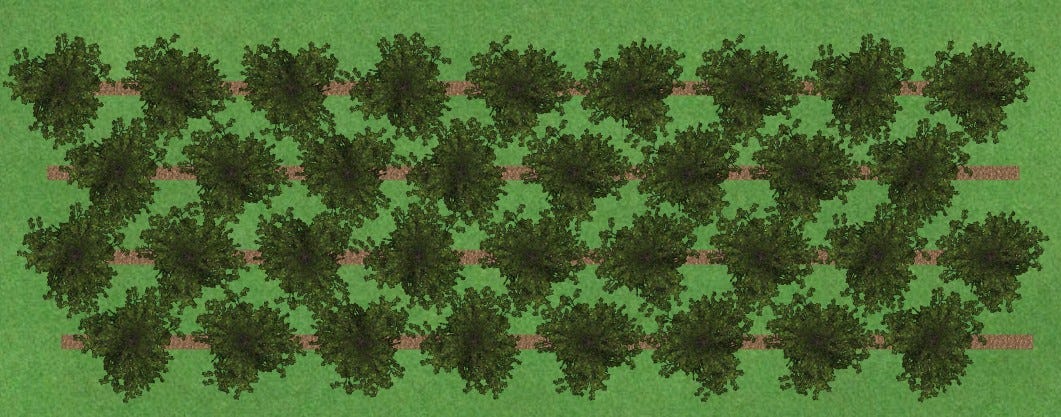
Regenerative Landscape Design - Online Interactive Course
Want to learn how to design, build and manage regenerative landscapes? Join us on our Regenerative Landscape Design - Online Interactive Course. We look forward to providing you with the confidence, inspiration, and opportunity to design, build and manage regenerative landscapes, gardens, and farms that produce food and other resources for humans while enhancing biodiversity.
You can access the course material at anytime and join the live sessions and interactive forums that run from May - Oct every year. All members of the Bloom Room receive a 500 EUR discount. To take up this offer all you have to do is become an annual subscribers to our Substack and register here with the promo code BLOOM.
I look forward to you joining !
Jujube Cultivars
With their rich history, adaptability, and myriad uses, they offer something for everyone. Whether fresh, dried, or brewed into tea, jujubes are sure to become a favorite in your home. There are hundreds of jujube varieties, each with its own unique flavor and texture and we have an excellent selection of Jujube cultivars available from our nursery , perfectly suited to European gardens and all tolerant of frosts and hardy to -15°C (5°F) with Lang and Li hardy to -20°C
Jujube - Ziziphus jujuba 'Lang '
Description: Larger pear-shaped fruits, sweet flavor reminiscent of green apples. High sugar content when dried.
Fruiting Period: September, edible in their yellow-green phase
Pollination: Self fertile, will benefit from cross pollination
Root Stock: Wild Jujube
Hardiness: 5-10 USDA (-20C)
Jujube - Ziziphus jujuba 'Li '
Description: Large round shaped fruit, good flavor.
Fruiting Period: September
Pollination: Self fertile, will benefit from cross pollination
Root Stock: Wild Jujube
Hardiness: 5 - 10 USDA (-20C)
Jujube - Ziziphus jujuba 'Tiger Tooth'
Description: Long and thin fruits, considered one of the best for drying
Fruiting Period: Fruit ripens September. Harvest when fruit are half green and brown for fresh eating or drying.
Pollination: Self fertile, will benefit from cross pollination
Root Stock: Wild Jujube
Hardiness: 6a -7 USDA (-15C)
The prices for our cultivars are as follows.
27 EUR per tree
250 EUR for 10 trees
2300 EUR for 100 trees
Interested in cultivating your own jujube trees? We offer a selection of premium Ziziphus jujuba cultivars, on standard rootstocks, available for order year-round. Deliveries are made during the following optimal planting windows:
Autumn: October – December
Spring: March – April
For larger orders (100+ trees), we recommend placing your request early in the season to guarantee availability.
Delivery & Payment
We ship across Europe with estimated delivery times:
Western Europe: 7–9 business days
Eastern Europe: 2–5 business days
Flexible Payment Options:
Bank transfer (GBP, EUR)
PayPal (GBP, EUR)
Cryptocurrency (USDC, USDT)
How to Order:
Simply email us at balkanecologyproject@gmail.com, and we’ll assist you with your purchase.
Support Our Project
If you appreciate the work we are doing you can show your support in several ways.
Become a member of the Bloom Room. A $70 annual subscription to our Substack provides you with access to live sessions, design tutorials, a members forum and more, see details here.
Make a purchase of plants or seeds from our Nursery or Online Store
Joining us for one of our Practical Courses or Online Courses
Comment, like, and share our content on social media.
We offer a diversity of plants and seeds for permaculture, forest gardens, and regenerative landscapes including a range of fruit and nut cultivars. We Deliver all over Europe from Nov - March. - Give a happy plant a happy home :)

